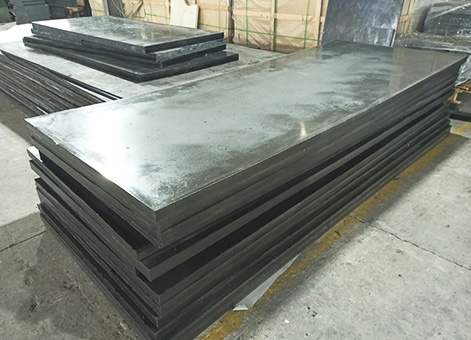When it comes to industries that deal with abrasive materials or require excellent sliding properties, wear plates play a crucial role. Wear plates are designed to protect surfaces from wear caused by friction, impact, or any other form of damage. One particular type of wear plate that has gained immense popularity in recent years is Ultra High Molecular Weight Polyethylene (UHMWPE) wear plate.
UHMWPE wear plates offer exceptional properties, making them ideal for a wide range of applications. There are many UHMWPE wear plates supplier but this guide aims to provide a comprehensive overview of UHMWPE wear plates, including their features, benefits, applications, and installation methods.
1. Features of UHMWPE Wear Plates:
UHMWPE wear plates possess several unique features that make them highly desirable in industries where wear and impact resistance are crucial. Some notable features include:
a. Exceptional Wear Resistance
UHMWPE wear plates exhibit remarkable wear resistance, making them an ideal choice for applications involving abrasive materials.
b. Low Friction Coefficient
These wear plates have a low friction coefficient, offering excellent sliding properties that reduce energy consumption and improve efficiency.
c. Impact Resistance
UHMWPE wear plates can withstand high-impact forces, making them suitable for applications that involve heavy machinery or equipment.
d. Chemical Resistance
UHMWPE is highly resistant to chemicals, acids, and solvents, ensuring long-lasting performance even in harsh environments.
e. Self-Lubricating
The self-lubricating properties of UHMWPE wear plates eliminate the need for additional lubrication, reducing maintenance requirements.
2. Benefits of Using UHMWPE Wear Plates:
Choosing UHMWPE wear plates over traditional materials like steel or rubber offers numerous advantages. Some key benefits include:
a. Extended Service Life
UHMWPE wear plates have a significantly longer service life than other materials due to their exceptional wear resistance, reducing downtime and maintenance costs.
b. Noise Reduction
The low friction coefficient of UHMWPE wear plates reduces noise levels, making them ideal for industries that prioritize noise reduction.
c. Lightweight
UHMWPE is a lightweight material, that eases handling and installation, especially when compared to heavy steel plates.
d. Corrosion Resistance
UHMWPE wear plates are highly resistant to corrosion, eliminating the need for frequent replacement or repairs.
e. Versatility
UHMWPE wear plates can be easily machined and fabricated to suit various shapes and sizes, allowing for flexibility in design and application.
3. Applications of UHMWPE Wear Plates:
UHMWPE wear plates find extensive use in a wide range of industries and applications, including:
a. Mining and Quarrying
UHMWPE wear plates are commonly used in mining and quarrying operations to protect equipment and machinery liners from abrasive materials.
b. Material Handling
These wear plates are utilized in material handling applications like chutes, hoppers, and conveyors to reduce wear and improve the smooth flow of materials.
c. Agriculture
UHMWPE wear plates are used in farming equipment like silo liners, grain elevators, and feeders to prevent material buildup and reduce wear.
d. Marine
UHMWPE wear plates are employed in marine applications such as boat hulls, fenders, and sliding beds due to their excellent resistance to saltwater and impact.
e. Automotive
UHMWPE wear plates are incorporated into automotive components like truck bed liners, snowplow blades, and conveyor systems to enhance durability and reduce maintenance.
4. Installation Methods:
Installing UHMWPE wear plates requires following specific guidelines to ensure optimum performance and longevity. The following general actions should be taken into account while installing:
a. Surface Preparation
The surface where the wear plate will be installed should be clean, dry, and free from any loose materials or debris.
b. Cutting and Shaping
UHMWPE wear plates can be easily cut and shaped using common woodworking tools or CNC machines to fit the desired application.
c. Fastening
UHMWPE wear plates can be fastened to the surface using mechanical fasteners like screws, bolts, or rivets. Care should be taken to avoid over-tightening, which could cause stress cracks.
d. Bonding
Alternatively, UHMWPE wear plates can be bonded to the surface using adhesives specifically designed for UHMWPE. Adequate surface preparation and adhesive selection are crucial for a strong bond.
e. Regular Maintenance
Periodic inspection and maintenance should be conducted to check for signs of wear or damage. Any worn or damaged plates should be replaced promptly to maintain optimal performance.
Conclusion:
UHMWPE wear plates offer outstanding wear resistance, low friction, and excellent impact resistance, making them a preferred choice in various industries. Their numerous benefits, including extended service life, noise reduction, and versatile applications, make them a valuable investment for businesses. Understanding the features, benefits, applications, and installation methods of UHMWPE wear plates is essential to maximize their performance and ultimately improve productivity and reduce maintenance costs.
For More Details: (Click Here)




